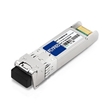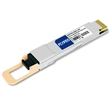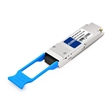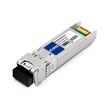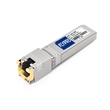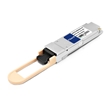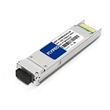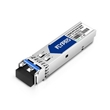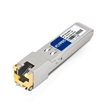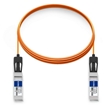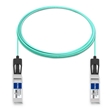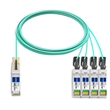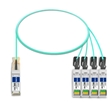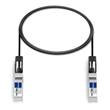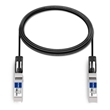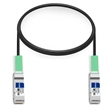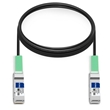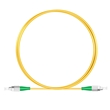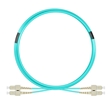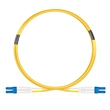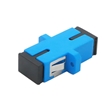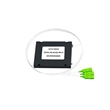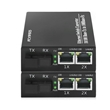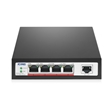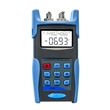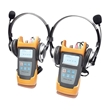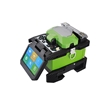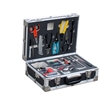10GBASE-T Optical Modules: Harnessing High-Speed Connectivity in Diverse Environments

- Introduction
- Specification
- Technological Superiority of 10GBASE-T Modules
- Application Scenarios of 10GBASE-T Optical Modules
- How can I choose the right 10GBASE-T optical module for my needs?
- The thermal management challenges of 10GBASE-T optical modules in high-density network deployments
- Future Trends
- Selection and Considerations
- Frequently Asked Questions(FAQs)
- Q1: What is the maximum distance 10GBASE-T modules can transmit data without quality loss?
- Q2: Are 10GBASE-T modules backward compatible?
- Q3: Can 10GBASE-T be used in industrial environments?
- Q4: Can 10GBASE-T modules be used for residential purposes?
- Q5: Are 10GBASE-T optical modules cost-effective?
- Q6: What are the key challenges associated with upgrading existing network infrastructures to support 10GBASE-T optical modules, and what strategies can be employed to overcome these challenges?
- Q7: What are the key factors that influence the maximum transmission distance supported by 10GBASE-T optical modules, and how do these factors impact network planning and deployment?
- Q8: How does the electromagnetic interference (EMI) susceptibility of 10GBASE-T optical modules compare to fiber optic modules, and what measures can be taken to mitigate EMI issues in copper-based networks?
- Q9: What are the key considerations for ensuring interoperability and compatibility between 10GBASE-T optical modules and networking equipment from different vendors in a mixed-vendor environment?
- Q10: What are the typical deployment scenarios where 10GBASE-T optical modules are preferred over fiber optic modules, and what are the key factors driving this choice?
- Conclusion
- Contact Us
Introduction
The 10GBASE-T optical module is a cutting-edge technology that enables the transmission of data at speeds of up to 10 gigabits per second (Gbps) over copper cables. It offers several advantages over traditional optical modules, such as higher transmission distances, lower power consumption, and cost-effectiveness. These features make it an ideal choice for various industries and applications.
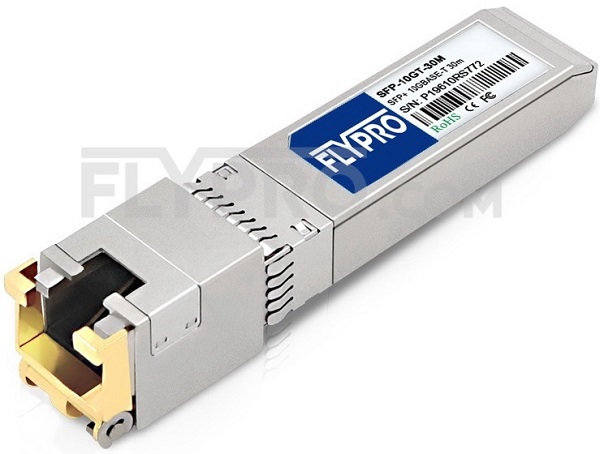
Specification
Specification Details Data Rate 10 Gbps Maximum Transmission Distance 100 meters over Cat 6a/Cat 7 cabling Cable Type Twisted pair Cat 6a/7 Connector Type RJ-45 Power Consumption 2-5W depending on the model and operational environment Operating Temperature Range 0°C to 70°C (Commercial grade) / -40°C to 85°C (Industrial grade) Storage Temperature Range -40°C to 85°C Relative Humidity 5% to 95% non-condensing Compliance IEEE 802.3an standard for 10 Gigabit Ethernet over twisted pair Ethernet Auto-Negotiation Supported for compatibility with slower speed networks Cross-Talk Cancellation Advanced algorithms to improve signal integrity MTBF (Mean Time Between Failures) 1,000,000+ hours EMC (Electromagnetic Compatibility) Generally compliant with FCC, CE, and other regional standards LED Indicators Typically included for status indication PoE Capability Optional, IEEE 802.3at (PoE+) compliant in some models Form Factor 8P8C (standardized in ISO/IEC 11801 and ANSI/TIA-1096-A) Of course, these are just some general specifications.each 10GBASE-T SFP+ module would be accompanied by a detailed specification sheet from the manufacturer that would include these and possibly additional specifications, which must be carefully considered to ensure compatibility and optimal performance in a given network infrastructure.
Technological Superiority of 10GBASE-T Modules
- Speed and Performance:
10GBASE-T supports high-bandwidth data transmission rates of up to 10 Gigabits per second (Gbps), which is ten times faster than its predecessor, 1GBASE-T. This accelerated speed significantly enhances network performance and allows for the rapid transfer of large data volumes, catering to the escalating demands for higher-throughput in modern data-intensive applications.
- Transmission Distance:
One of the key strengths of 10GBASE-T is its ability to maintain a 10 Gbps connection over longer distances, reaching up to 100 meters when using Category 6a or Category 7 cabling. This range is highly suitable for typical data center and enterprise layouts, providing ample flexibility for network design and infrastructure placement without necessitating the frequent use of repeaters or additional switching hardware.
- Power Consumption:
With technological advancements, power efficiency in 10GBASE-T modules has seen consistent improvements. Modern modules are designed with energy efficiency in mind, with some models achieving power consumption as low as 2 watts per port in idle mode. This ensures operational cost savings and supports organizations’ green initiatives by reducing the overall energy footprint of networking equipment.
- Cost Effectiveness:
Cost efficiency is one of 10GBASE-T's most prominent benefits. The widespread adoption and maturity of twisted-pair copper technology contribute to lower component and implementation costs. Additionally, backward compatibility with existing 1G networks allows for seamless, incremental upgrades, protecting past infrastructural investments and diminishing the need for immediate comprehensive system overhauls.
- Application Scenarios:
10GBASE-T is highly versatile and finds applications across various scenarios. It is particularly advantageous in data centers for uplinks from servers to switches and for storage area network connectivity where high throughput is vital. It is also ideal for aggregating uplinks from multi-gigabit-capable access switches and routing traffic back to the core of the network in enterprise environments.
The 10GBASE-T standard is a robust and economical solution tailored for contemporary networking demands, offering a harmonious balance between performance, distance, energy consumption, cost, and versatility, thus providing an effective approach to scaling network infrastructure in concert with evolving organizational needs.
- Speed and Performance:
Application Scenarios of 10GBASE-T Optical Modules

- Data Centers:
Providing high-speed links between servers and switches within the same rack or in short-distance inter-rack connections.
Facilitating top-of-rack (ToR) switch to server connectivity, allowing for 10 Gigabit Ethernet connections over Cat 6a/7 cabling up to 100 meters.
- Enterprise Networking:
Connecting switches to routers or aggregation switches in a typical campus or business network infrastructure.
Upgrading backbone connections to support 10 GbE, enhancing bandwidth for critical business applications and services.
- Storage Area Networks (SAN):
For Network Attached Storage (NAS) or Storage Area Networks, these modules provide a cost-effective solution for high throughput and low latency connections, critical for storage traffic.
- High-Performance Computing (HPC) Clusters:
10GBASE-T modules enable low-cost, high-speed network interfaces that are required for the dense computing nodes in HPC clusters.
- Virtualization:
In virtualized server environments, 10GBASE-T is beneficial to aggregate traffic from multiple virtual machines, offering the necessary bandwidth and reducing network congestion.
- Video Streaming and Content Delivery Networks:
Networks that manage high volumes of multimedia content benefit from the high-speed connections provided by 10GBASE-T, ensuring smooth streaming and content delivery.
- VoIP and Unified Communications:
As voice and video traffic increase in corporate networks, higher bandwidth links become crucial, for which 10GBASE-T provides a supportive infrastructure.
- Surveillance Systems:
High-resolution video surveillance systems require significant bandwidth for data transmission, and 10GBASE-T modules can help cater to this demand.
- Industrial Applications:
In industrial settings, such as manufacturing facilities and automation systems, 10GBASE-T optical modules are employed to establish robust and high-speed communication networks.
The modules support real-time monitoring, control systems, and data exchange in industrial processes, enhancing operational efficiency and productivity.
- Smart Cities:
As part of smart city initiatives, 10GBASE-T optical modules are utilized to build advanced communication infrastructures that enable the efficient management of urban services and resources.
These modules facilitate the implementation of smart city technologies, including IoT devices, intelligent transportation systems, and public safety solutions.
The versatile application scenarios of 10GBASE-T optical modules span across diverse industries and sectors, where high-speed data transmission, reliability, and efficiency are paramount for driving innovation, productivity, and connectivity in today's digital world.
- Data Centers:
How can I choose the right 10GBASE-T optical module for my needs?
When selecting a 10GBASE-T optical module, or more accurately, a 10GBASE-T SFP+ RJ45 module, you should consider several technical and operational factors to ensure compatibility, performance, and cost-effectiveness for your specific network environment.
- Network Requirements:
Bandwidth and Traffic Patterns:Assess whether the module supports the required data rate of 10 Gbps and consider the type of traffic your network will carry.
Switch Compatibility:Ensure the module is compatible with your switch's SFP+ ports. Most 10GBASE-T modules should be plug-and-play with compliant devices, but it's important to check with the manufacturer.
- Transmission Range and Media Type:
If the transmission distance is short and utilizes copper cabling (within the building), a standard 10GBASE-T module that supports RJ45 connectors and Cat 6A/7 cabling will likely suffice.
If longer distances are needed, consider fiber optic solutions like 10GBASE-SR for up to 400 meters or 10GBASE-LR for longer-range requirements.
- Power Over Ethernet (PoE) Support:
Determine if you require PoE capabilities for devices such as wireless access points or surveillance cameras. If so, ensure the modules support the PoE standards needed (e.g., PoE+, IEEE 802.3at).
- Power Consumption:
Evaluate the power consumption per port attributed to the module, as this impacts both operational expenditure (OpEx) and the thermal design of your equipment.
- Latency:
Depending on the applications and network architecture, latency may be a critical factor. Check the module’s latency specifications and ensure they align with your network’s performance criteria.
- Environment and Operating Conditions:
Consider the module's operating temperature range and environmental hardening if they will be deployed in industrial or harsh environments.
- Vendor Reputation and Support:
Choose a reputable vendor that offers robust customer support, adequate documentation, and warranty services.
- Regulatory Compliance:
The module should comply with relevant standards such as IEEE 802.3an for 10GBASE-T, and environmental regulations such as RoHS.
- Cost Considerations:
Compare the cost of the module against your budget while factoring in future scalability and the potential need for additional accessory components.
- Forward Compatibility:
Consider whether the modules offer any form of compatibility with future network upgrades or technologies to maximize longevity and return on investment.
It's recommended to conduct a thorough assessment of these factors with your networking team and obtain module samples for testing in your environment to verify their performance and compatibility before proceeding with a bulk purchase.
- Network Requirements:
The thermal management challenges of 10GBASE-T optical modules in high-density network deployments
In high-density network deployments, thermal management is a significant challenge, especially when deploying 10GBASE-T SFP+ modules. The 10GBASE-T technology, while delivering high-speed network connectivity over copper cabling, tends to draw more power and generate more heat compared to direct attach cables (DACs) or fiber optic modules. In a high-density setting, the concentration of these modules within a confined space exacerbates thermal issues.

- Thermal Load:
10GBASE-T transceivers typically operate at higher wattages due to the power required for copper transmission over long distances. This results in an increased thermal load per port, which can compound in a high-density chassis or rack environment.
- Airflow Restriction:
High-density deployments often lead to packed racks with little space between equipment, sometimes impeding proper airflow. This restriction can prevent adequate cooling, leading to elevated operating temperatures that could affect performance and reliability.
- Heat Dissipation:
Efficient heat dissipation becomes problematic as more 10GBASE-T modules populate a single switch or server. Convective cooling may be insufficient, and additional cooling mechanisms might be necessary to maintain optimal operating temperatures.
- Cooling Infrastructure:
To manage the heat, additional cooling infrastructure may be required. This can include increased air conditioning, directed airflow solutions such as variable-speed fans, and even liquid cooling systems in extreme cases.
- Power Consumption and Efficiency:
The power draw not only impacts thermal management but also overall energy consumption and costs. The increased power demand of 10GBASE-T in high-density deployments can necessitate more efficient power supplies and potentially affect the power usage effectiveness (PUE) of a data center.
- Component Lifespan:
High operating temperatures can accelerate the aging of electronic components. The increased thermal stress in high-density deployments can potentially lead to shorter lifespans for the 10GBASE-T modules and associated hardware, unless properly managed.
- Design Considerations:
Network engineers and data center operators need to carefully consider rack design, including spacing for adequate ventilation, choosing the right thermal management techniques, and incorporating advanced environmental monitoring systems to continually adjust cooling based on real-time heat output.
- Best Practices:
1. Utilize blanking panels and cable management systems to ensure optimal airflow.
2. Implement smart rack designs that facilitate hot-aisle/cold-aisle layouts.
3. Consider energy-efficient hardware that is designed to operate in high-temperature environments.
4. Regularly clean and maintain cooling systems to ensure their effectiveness.
Deploying 10GBASE-T SFP+ modules in a high-density environment requires meticulous thermal management planning to ensure stable and reliable network operations. Effective cooling strategies, optimized rack layouts, and advanced infrastructure can help to mitigate the heat-related challenges presented by 10GBASE-T modules.
- Thermal Load:
Future Trends

- Increased Speeds:
Ongoing research aims to enhance the data rate of 10GBASE-T optical modules beyond 10Gbps, catering to the escalating need for faster data transmission.
- Enhanced Transmission Distances:
Efforts are being made to extend the transmission distances of 10GBASE-T optical modules, enabling their application in larger network deployments.
- Advancements in Power Efficiency:
Low-power technologies are being developed to further reduce the power consumption of 10GBASE-T optical modules, promoting energy efficiency and sustainability.
- Cost Reduction:
As the technology matures and market competition intensifies, the cost of 10GBASE-T optical modules is expected to decrease, making them more accessible to a wider range of users.
The future trends of 10GBASE-T modules point towards even lower power consumption, increasing integration of advanced features such as cross-talk cancellation, and higher densities to accommodate growing data demands in a compact form factor.
- Increased Speeds:
Selection and Considerations
1. Understand the requirements of your network in terms of speed, distance, and environment.
2. Evaluate if your current infrastructure can support the power demands.
3. Ensure compatibility with existing hardware.
4. Decide between industrial and consumer grade based on the deployment environment.
Frequently Asked Questions(FAQs)
Q1: What is the maximum distance 10GBASE-T modules can transmit data without quality loss?
A1: 100 meters (328 feet) over Category 6a or 7 cabling.
Q2: Are 10GBASE-T modules backward compatible?
A2: Yes, they can connect with older Ethernet standards like 1000BASE-T.
Q3: Can 10GBASE-T be used in industrial environments?
A3: Industrial-grade modules are designed for these environments and can tolerate harsher conditions.
Q4: Can 10GBASE-T modules be used for residential purposes?
A4: Yes, particularly for high-end or "smart home" implementations requiring high bandwidth.
Q5: Are 10GBASE-T optical modules cost-effective?
A5: Yes, 10GBASE-T optical modules are cost-effective as they utilize existing copper cabling infrastructure, eliminating the need for expensive fiber optic installations.
Q6: What are the key challenges associated with upgrading existing network infrastructures to support 10GBASE-T optical modules, and what strategies can be employed to overcome these challenges?
A6: Upgrading existing network infrastructures to support 10GBASE-T optical modules presents challenges such as cable compatibility, power requirements, and network configuration changes. Strategies to overcome these challenges include conducting thorough network assessments, implementing phased upgrade plans, and ensuring adequate power supply and cooling capacity.
Q7: What are the key factors that influence the maximum transmission distance supported by 10GBASE-T optical modules, and how do these factors impact network planning and deployment?
A7: The maximum transmission distance of 10GBASE-T optical modules is influenced by factors such as cable quality, interference levels, and signal attenuation. Network planners must carefully consider these factors to ensure reliable performance and adherence to distance limitations in their deployment scenarios.
Q8: How does the electromagnetic interference (EMI) susceptibility of 10GBASE-T optical modules compare to fiber optic modules, and what measures can be taken to mitigate EMI issues in copper-based networks?
A8: Copper-based 10GBASE-T optical modules are more susceptible to EMI compared to fiber optic modules due to the nature of electrical signaling over copper cables. To mitigate EMI issues, proper grounding techniques, shielding, and cable management practices should be implemented in copper-based networks.
Q9: What are the key considerations for ensuring interoperability and compatibility between 10GBASE-T optical modules and networking equipment from different vendors in a mixed-vendor environment?
A9: Interoperability between 10GBASE-T optical modules and networking equipment from different vendors hinges on adherence to industry standards such as IEEE 802.3an. Network administrators should verify compatibility through interoperability testing and ensure that vendor-specific implementations align with standard specifications.
Q10: What are the typical deployment scenarios where 10GBASE-T optical modules are preferred over fiber optic modules, and what are the key factors driving this choice?
A10: 10GBASE-T optical modules are often preferred in scenarios where existing copper infrastructure is prevalent or where cost considerations favor copper-based solutions over fiber optics. Factors such as ease of installation, familiarity with copper cabling, and budget constraints drive the choice of 10GBASE-T modules in these deployments.
Conclusion
10GBASE-T optical modules have revolutionized high-speed optical communication with their exceptional speed, extended transmission distances, low power consumption, cost-effectiveness, and versatile applications. As the technology continues toevolve, it is crucial to consider various technical specifications, such as data rate, transmission distance, connector type, power consumption, and temperature range when selecting a 10GBASE-T optical module. By evaluating factors like transmission distance, network infrastructure, power budget, cost, and future scalability, you can choose the most suitable module for your specific needs.
The development trends in 10GBASE-T optical modules focus on increasing speeds, extending transmission distances, enhancing power efficiency, and reducing costs. These advancements aim to meet the growing demands of modern communication networks and make 10GBASE-T optical modules more accessible and efficient.
In terms of technical advantages, 10GBASE-T optical modules offer compatibility, flexibility, reliability, high bandwidth, and enhanced security. Their seamless integration with existing network devices, utilization of copper infrastructure, and reliable data transmission make them ideal for a wide range of applications.
Contact Us
If you have any further questions or require more specific information, feel free to ask! info@flypro.com


